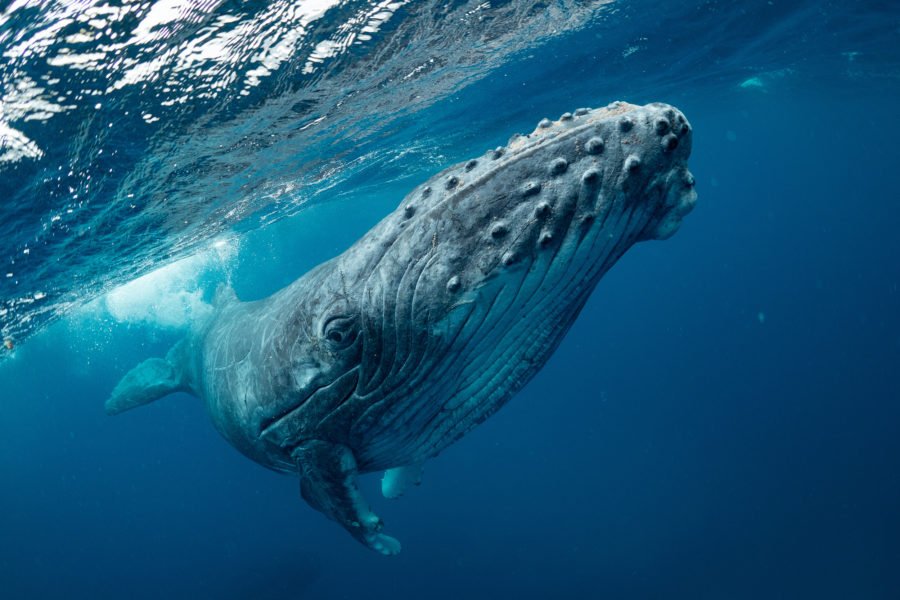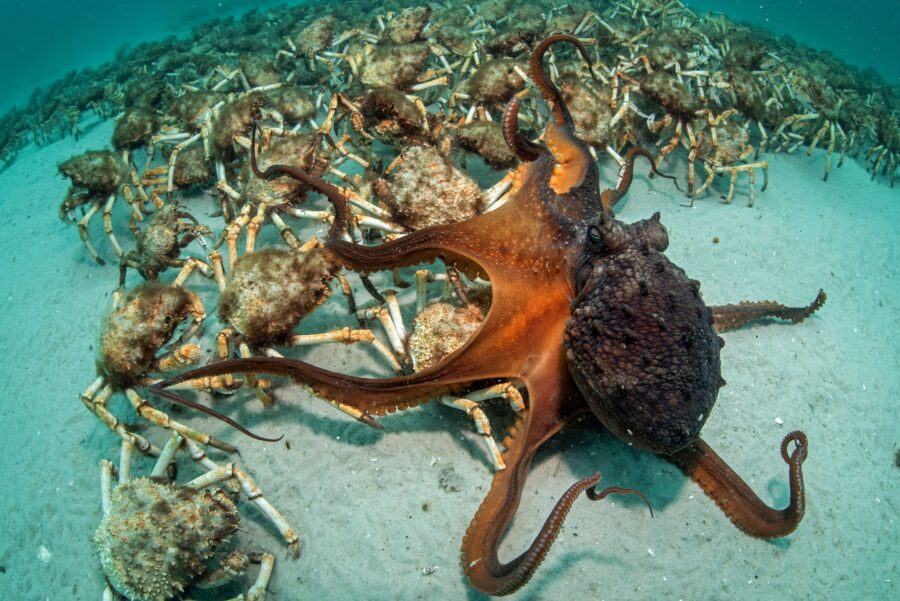A hitchhiker’s guide to the humpback highway

Cameras secured with suction caps to humpback whales have recorded remoras (commonly known as suckerfish) attaching themselves to the whales and hanging on over long distances.
One video shows a humpback whale (Megaptera novaeangliae) breaching the surface and dislodging several remoras that immediately reattach themselves as the whale re-enters the water:
Griffith University marine scientist Dr Olaf Meynecke didn’t set out to study remoras but recorded the video footage while researching whale behaviour near Queensland’s Gold Coast.
“In the past we had sometimes photographed a remora on a whale or seen large numbers of remoras on them but never had the chance to study them up close until we used the suction cup tags. They started to capture our interest,” Dr Meynecke told Australian Geographic.
More than a free ride
Remora species have also been recorded riding on other marine animals including sharks, manta rays and dolphins, and have even been known to attach themselves to boats and scuba divers.
Dr Meynecke said his team observed up to 50 remora attached to a single humpback whale.
“The plates on top of their heads create a vacuum effect that helps them adhere to the whale, plus they grip to the whale’s body using their modified dorsal fin,” he said.
So what’s in it for the fish?
“It’s tempting to say they get a free ride. But a free ride to where?” Dr Meynecke said.
“From what we know the suckerfish don’t really want to go to all the places the whales are going, but they want to be close to a whale for food and safety. On the whale they find an abundance of crustaceans, and if not there is always some flaky skin to nibble as well. On the whale they also find other mates and can spawn.
“[But] there are many unknowns, including how far and how many of them travel with the whales along their long migration. They have been observed in Antarctica, suggesting that at least some of them take the full ride.”
And what do the whales think of their uninvited passengers?
“From my observations over the years, I am very certain the whales are aware of them,” Dr Meynecke told Australian Geographic.
“Remoras are harmless and are not a parasite to the whales; in fact, they can benefit the whale by removing sea lice and other crustaceans wanting to settle on the whale’s body.
“But the relationship doesn’t appear harmonious. At best the humpback whales are tolerating the suckerfish. I have seen whales looking at them, then breaching and then looking at them again, almost like checking if some of them might have gone.”
Just one piece of the puzzle
Macquarie University whale scientist and author of the book Humpback Highway, Dr Vanessa Pirotta, told Australian Geographic the videos are a fascinating insight into the relationship between the species.
“Remoras are the ultimate hitchhikers,” Dr Pirotta said.
“Any time we have an underwater insight into the secret lives of whales, and now remoras, is an opportunity for us to learn more. I love to see footage of whales doing what they do from a different perspective.”
“Humpback whales have incredibly important ecological roles,” added Dr Pirotta. “It would be very clever for the remora to hang on to an animal that utilises so much of the ocean.
“But this is just one piece of the puzzle when it comes to animals interacting with humpback whales. We see glimpses of these creatures, but still we don’t have that full perspective because so much of what we see is topside [of the water] only.”


Knowledge is key
Dr Meynecke agrees ocean life remains full of mystery.
“We are only starting to dive deeper into the complex relationships of marine species,” he said.
“Millions of years of evolution have allowed for connections to form and dependencies to be created.
“Animal behaviour and the web of life has always fascinated me. Knowledge is the key to enable us to protect our oceans better into the future.”






